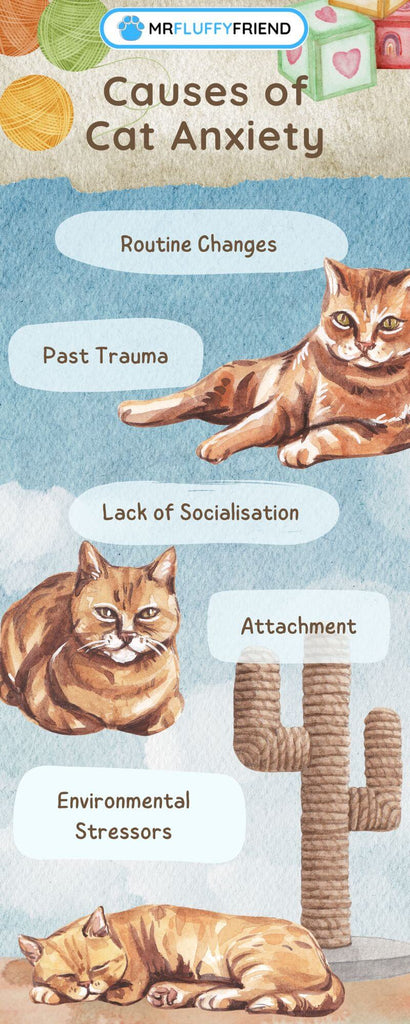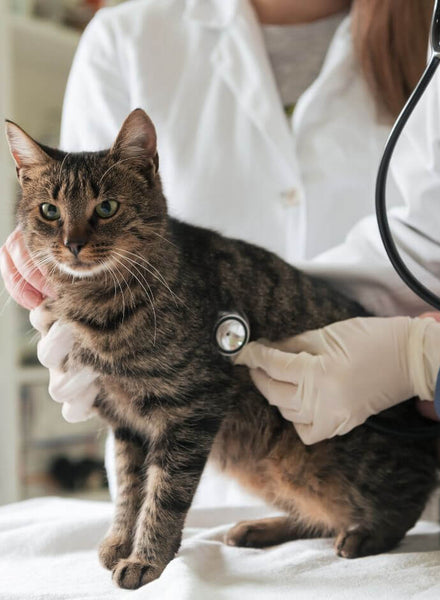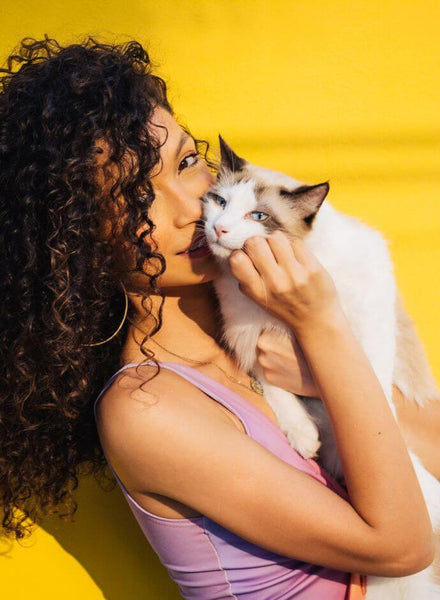How To Deal with Cat Separation Anxiety
Cats can sometimes experience separation anxiety, much like dogs and humans.
Whether you're leaving for work, running errands, or going on a trip, your cat may exhibit signs of distress when you're not around.
Understanding cat separation anxiety is only the first step to your peace of mind.
As pet owners, you also need to address your cat’s separation anxiety.
In today’s blog, we’ll look at the following (click the links below to go to that section):
- Possible signs of cat separation anxiety
- Causes of feline separation anxiety
- Treatment options for your feline’s separation-related problems

Cat Separation Anxiety Signs
Recognising the signs of separation anxiety in cats is the first step in helping them cope with their distress.
Here are some common signs of anxiety in felines:

- Excessive Vocalisation:
Excessive meowing is a sign of separation anxiety.
You’ll notice this especially when you're about to leave.
- Destructive Behaviour:
One of the common signs of cat anxiety is destructive behaviour.
This can take the form of your kitty scratching furniture, doors, or walls.
- Inappropriate Elimination:
Your feline companion may urinate or defecate outside the litter box when experiencing anxiety.
- Pacing or Restlessness:
Your cat may exhibit pacing behaviour or appear restless when left alone.
- Loss of Appetite:
A cat with separation anxiety may refuse to eat or drink in your absence.
Related: 10 Signs and Symptoms of a Sick Cat
Cat Separation Anxiety Causes

Understanding the underlying causes of separation anxiety in cats can help you address the issue more effectively.
Several factors may contribute to your cat's anxiety, including:
- Big Changes in Routine:
Cats are creatures of habit.
Any sudden changes in their routine, like your absence for long periods of time, can trigger anxiety.
- Previous Trauma:
Cats that have experienced abandonment, neglect, or traumatic events in the past may be more prone to separation anxiety.
- Lack of Socialisation:
Kittens that have very few social interactions may develop separation anxiety as they grow older.
- Attachment to Owner:
Overly attached cats may experience distress when separated from them.
- Environmental Factors or Stressors:
Factors such as loud noises, new pets, or changes in the household environment can worsen separation anxiety in cats.
Diagnosing Separation Anxiety in Cats
Diagnosing separation anxiety in cats can be challenging.
The symptoms of separation anxiety may overlap with other behavioural or medical issues.
However, an animal or veterinary behaviourist can help assess your cat's behaviour.
They can determine if separation anxiety is the underlying cause.
Diagnostic steps may include:

- Behavioural Assessment:
Your veterinarian will conduct a thorough evaluation of your cat's behaviour.
The tests would include checking your cat’s response to being left alone and their behaviour when you're present.
- Medical Examination:
Rule out any underlying medical conditions contributing to your cat's symptoms.
This will be done through a comprehensive physical examination or a diagnostic test.
- Behavioural History:
Provide your veterinarian with a detailed history of your cat's behaviour.
Include any recent changes in your cat’s environment or routine.
- Observational Studies:
In some cases, your vet may recommend setting up cameras to observe your cat's behaviour when left alone.
This is one way to help confirm a diagnosis of separation anxiety.
Related: Cat Behavior Problems: How To Solve Them
How Can You Relieve Cat Separation Anxiety?
Fortunately, there are several tips you can employ to help with your cat's separation anxiety:

- Gradual Departures and Returns:
Practice leaving and returning gradually to desensitise your cat to your comings and goings.
It’s a good idea to start with short absences and gradually increase the duration over time.
- Create a Safe Space:
Designate a quiet, comfortable area in your home where your cat can retreat when feeling anxious.
Provide hiding spots, cosy bedding, and familiar toys to help them feel secure.
- Interactive Toys and Puzzles:
Keep your cat mentally stimulated and entertained in your absence.
Provide them with interactive toys, puzzle feeders, or treats hidden around the house.
- Soothing Music or Scents:
Calming music or pheromone diffusers can help create a relaxing atmosphere for your cat.
- Seek Veterinary Advice:
If your cat's separation anxiety is severe or persistent, consult with your vet.
They can offer guidance and may recommend anti-anxiety medication.
They might also recommend behavioural therapy to help manage the anxiety.
Can You Prevent Cat Separation Anxiety?
While it may not be possible to completely prevent separation anxiety in cats, there are steps to reduce its development:
- Early Socialisation:
Ensure your kitten is properly socialised from a young age.
Expose them to other people, animals, and environments.
Encourage play sessions with your other companion animals.
- Establish A Regular Routine:
Stick to a consistent daily routine to provide your cat with a sense of security and predictability.
- Positive Reinforcement:
Use positive reinforcement techniques to reinforce calm behaviour and independence.
- Gradual Separation Training:
Start training your kitty to tolerate absences for short periods of time.
A great way to reinforce this is to start from an early age.
While in training, keep your furniture safe with a fluffy couch cover.
- Provide Environmental Enrichment:
Enrich your cat's environment with cat trees, puzzle toys, and scratching posts.
Toys and posts can help with physical and mental stimulation.
Related: Tips on How to Calm a Hyper Cat

Conclusion
Cat separation anxiety can be distressing for both cats and cat owners.
Then again, with patience, understanding, and proactive management, it can be effectively addressed.
By recognising the signs, identifying the causes, and implementing interventions, you can help your cat feel more comfortable and secure when left alone.
If you're struggling to manage your cat's separation anxiety, don't hesitate to seek guidance from a vet or animal behaviourist.
With the right approach, you can help your cat cope, even when they’re alone.
Looking for some products that could help you out?
Check out our Online Shop!
Here are some useful products in relation to this blog post:
